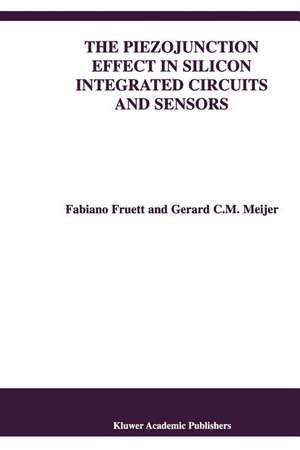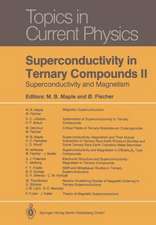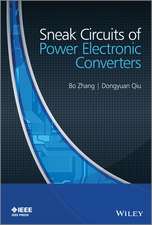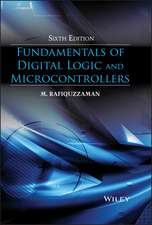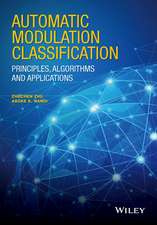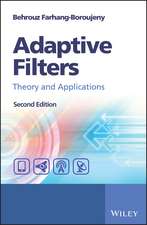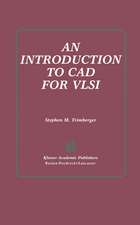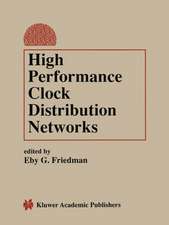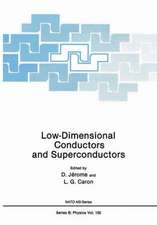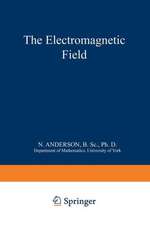The Piezojunction Effect in Silicon Integrated Circuits and Sensors: The Springer International Series in Engineering and Computer Science, cartea 682
Autor Fabiano Fruett, Gerard C.M. Meijeren Limba Engleză Paperback – 9 dec 2010
The piezojunction effect is caused by a stress-induced change in the conductivity of the minority-charge carriers, while the piezoresistive effect is caused by a similar effect for the majority-charge carriers. To characterise the anisotropic piezojunction effect, the authors performed systematic investigations over wide ranges of mechanical stress and temperature. The experiments have been performed for various crystal and stress orientations. The experimental results have been used to extract the first- and second-order piezojunction (FOPJ and SOPJ) coefficients for bipolar transistors.
It is shown how the knowledge of the piezojunction and piezoresistive coefficients can used to minimize the undesirable mechanical-stress effects on the electrical characteristics of transistors and resistors, respectively. Devices with lower mechanical-stress sensitivity can be found by comparing their piezo-coefficients. The layout of the device can also be optimized to reduce the mechanical-stress sensitivity.
As a next step it is shown, how the knowledge of the piezo-effects on device level can be used to predict and to reduce their negative influence on circuit level. This is demonstrated for a number of important basic circuits, including translinear circuits, temperature transducers and bandgap references.
Finally, it is shown how the piezojunction effect can be used to fabricate stress-sensing elements. It appears that, in comparison with resistive stress-sensing elements, the piezojunction sensors have the advantage of a smaller size and very low power dissipation.
| Toate formatele și edițiile | Preț | Express |
|---|---|---|
| Paperback (1) | 634.49 lei 6-8 săpt. | |
| Springer Us – 9 dec 2010 | 634.49 lei 6-8 săpt. | |
| Hardback (1) | 641.71 lei 6-8 săpt. | |
| Springer Us – 31 mai 2002 | 641.71 lei 6-8 săpt. |
Din seria The Springer International Series in Engineering and Computer Science
- 24%
 Preț: 1041.97 lei
Preț: 1041.97 lei - 20%
 Preț: 643.50 lei
Preț: 643.50 lei - 18%
 Preț: 1225.62 lei
Preț: 1225.62 lei - 18%
 Preț: 965.02 lei
Preț: 965.02 lei - 20%
 Preț: 646.12 lei
Preț: 646.12 lei - 18%
 Preț: 948.79 lei
Preț: 948.79 lei - 20%
 Preț: 646.62 lei
Preț: 646.62 lei - 15%
 Preț: 637.46 lei
Preț: 637.46 lei - 20%
 Preț: 643.83 lei
Preț: 643.83 lei - 18%
 Preț: 949.23 lei
Preț: 949.23 lei - 20%
 Preț: 644.48 lei
Preț: 644.48 lei - 20%
 Preț: 994.92 lei
Preț: 994.92 lei - 20%
 Preț: 645.97 lei
Preț: 645.97 lei - 18%
 Preț: 946.87 lei
Preț: 946.87 lei - 20%
 Preț: 995.57 lei
Preț: 995.57 lei - 18%
 Preț: 956.99 lei
Preț: 956.99 lei - 20%
 Preț: 644.98 lei
Preț: 644.98 lei - 15%
 Preț: 649.54 lei
Preț: 649.54 lei - 18%
 Preț: 950.21 lei
Preț: 950.21 lei - 18%
 Preț: 1221.38 lei
Preț: 1221.38 lei - 18%
 Preț: 957.62 lei
Preț: 957.62 lei - 15%
 Preț: 643.99 lei
Preț: 643.99 lei - 18%
 Preț: 948.47 lei
Preț: 948.47 lei - 18%
 Preț: 947.35 lei
Preț: 947.35 lei - 20%
 Preț: 1284.65 lei
Preț: 1284.65 lei - 20%
 Preț: 1633.95 lei
Preț: 1633.95 lei - 20%
 Preț: 1285.78 lei
Preț: 1285.78 lei
Preț: 634.49 lei
Preț vechi: 746.47 lei
-15% Nou
Puncte Express: 952
Preț estimativ în valută:
121.43€ • 125.44$ • 101.06£
121.43€ • 125.44$ • 101.06£
Carte tipărită la comandă
Livrare economică 26 martie-09 aprilie
Preluare comenzi: 021 569.72.76
Specificații
ISBN-13: 9781441952820
ISBN-10: 1441952829
Pagini: 176
Ilustrații: XII, 162 p.
Dimensiuni: 155 x 235 x 9 mm
Greutate: 0.25 kg
Ediția:Softcover reprint of the original 1st ed. 2002
Editura: Springer Us
Colecția Springer
Seria The Springer International Series in Engineering and Computer Science
Locul publicării:New York, NY, United States
ISBN-10: 1441952829
Pagini: 176
Ilustrații: XII, 162 p.
Dimensiuni: 155 x 235 x 9 mm
Greutate: 0.25 kg
Ediția:Softcover reprint of the original 1st ed. 2002
Editura: Springer Us
Colecția Springer
Seria The Springer International Series in Engineering and Computer Science
Locul publicării:New York, NY, United States
Public țintă
ResearchCuprins
Mechanical stress in integrated circuits.- Piezo effects in silicon.- Characterization of the piezojunction effect.- Minimizing the piezojunction and piezoresistive effects in integrated devices.- Minimizing the inaccuracy in packaged integrated circuits.- Stress-sensing elements based on the piezojunction effect.- Conclusions.
